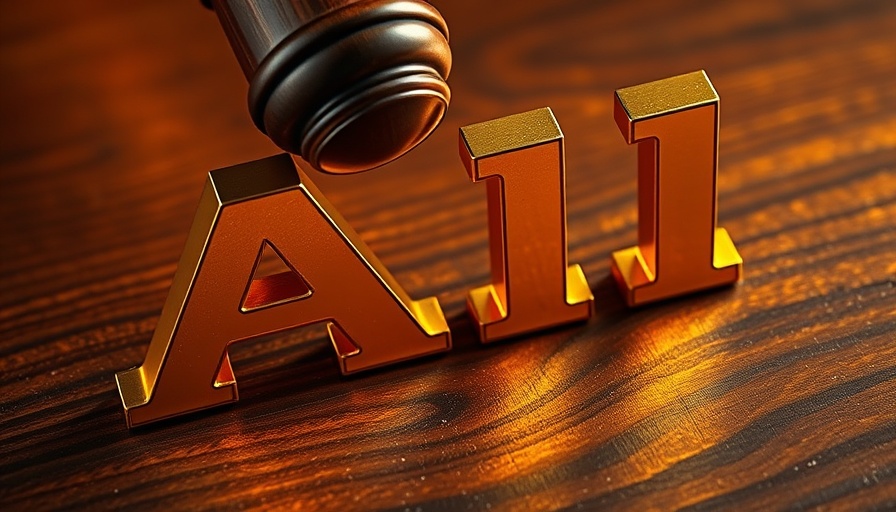
The Rise of AI in Legal Practices: What You Need to Know
The integration of artificial intelligence (AI) in various fields has revolutionized many professional practices, including law. Recent rulings from the High Court of England and Wales raise critical questions regarding the reliability of AI-generated citations and their implications for legal standards. Judge Victoria Sharp's warning about the risks associated with generative AI tools, like ChatGPT, underscores the legal profession's responsibility in maintaining accuracy and integrity in their practices.
AI Tools: A Double-Edged Sword for Lawyers
While AI can enhance efficiency and streamline research processes, it introduces new risks when relied upon without appropriate diligence. Judge Sharp's comments highlight that although tools like ChatGPT can generate coherent text, their responses may contain false information. Lawyers are thus urged to verify all information derived from AI against authoritative legal sources. This emphasizes the importance of critical thinking and professional accountability in documentation.
The Consequences of Misusing AI in Legal Contexts
The court ruling focused on two specific cases where AI mishaps led to serious misrepresentations in legal filings. In one instance, a lawyer cited 45 cases, of which 18 were nonexistent. The lack of diligence raises severe questions about professional conduct, prompting the court to warn of potential penalties ranging from admonition to more severe consequences as imposed by regulatory bodies. This serves as a compelling reminder for legal professionals about the importance of accuracy and verification in their work, especially when leveraging new technologies.
Broader Implications: Trust and Accountability in the Legal Profession
As AI technology becomes increasingly integrated into legal practices, maintaining trust in the legal system is paramount. The implications of using unreliable AI-generated citations extend beyond individual cases; they challenge the credibility of legal institutions overall. The High Court's proactive approach in addressing these issues sets a tone for necessary changes in both law practice and AI usage, fostering greater accountability and higher standards in the profession.
Future Trends in AI and Legal Work
Looking ahead, one must question not only how AI tools will evolve but also how they will be regulated within the legal framework. The recent court ruling could prompt the establishment of more rigorous guidelines for the use of AI in legal research. Organizations in the legal field may see an increasing demand for training on AI tool usage, emphasizing the necessity for lawyers to remain informed about technological advances while adhering to ethical standards.
What This Means for the Future of Law
The convergence of AI and legal practice signifies a pivotal point for both technology and law. Legal professionals, armed with innovative tools, face a dual responsibility: to embrace technological advancements and to uphold the integrity of the legal system. As AI continues to evolve, the legal community must navigate these complexities to protect public trust and ensure justice is served. The evolving landscape of AI regulation in law highlights the importance of ongoing dialogue regarding technology's role in preserving the rule of law.
The Moral of the Story: Vigilance is Key
Ultimately, as AI becomes a staple in legal research, the judiciary's firm reminder rings clear: diligence and accuracy are non-negotiable. Legal practitioners must embrace AI responsibly by verifying its outputs and staying vigilant against potential inaccuracies that could undermine their work.
In conclusion, the intersection of technology and law provides both opportunities and challenges. Legal professionals must adapt to these technologies with a strong commitment to ethics and accuracy, ensuring that they do not compromise the very foundations of their profession. As AI continues to shape the future of legal practices, the commitment to verify and authenticate information will only become more crucial for maintaining the integrity of the justice system.
 Add Row
Add Row  Add
Add 



Write A Comment